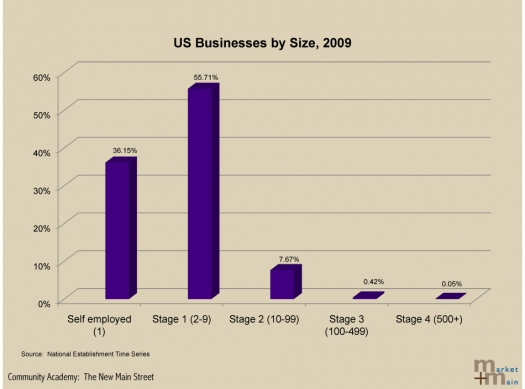The key questions before Decaturites attending the November 4 Community Academy seminar at the Holiday Inn Convention Center were these:
Is our current dependency on residential development for 85 percent of our tax revenue the mix we want? Or do we want to encourage more commercial office and retail?
Answers to that question will guide the City and TSW, its consulting team, in updating Decatur’s 10-year Strategic Plan. For the complete lowdown on the current phase of the process and how we’re going about it, check this post. And you can follow each step in the public discussions that have led us to this point by reading the news posts preceding this one.
So how did the discussion go for “The New Main Street,” the third in our series of Community Academy seminars?
First of all, none of our discussion groups opted for the status quo. Thanks to a fact-filled presentation (4.7mb .pdf) by Lakey Boyd of the Market + Main consulting group, seminar participants had plenty of evidence to convince them that changes in the residential-commercial mix would be positive from the standpoints of both tax revenues and quality of life. So folks set about listing the sorts of Decatur-appropriate commercial development that might be the right mix in sites targeted for potential growth. And they discussed how they might expand residential choices in areas, like the downtown, where offices, entertainment, and retail dominate.
Boyd’s presentation laid out the challenges and opportunities. Decatur’s quality-of-life amenities are major assets. Yet its population and income demographics don’t hit the targets for some retailers residents might prefer – specialty grocer Trader Joe’s, for instance. Not until there are more people in town. And it wouldn’t hurt having more people who make more money.
Getting more people will likely require a better mix of housing at both the lower and higher price points, plus a willingness to allow for greater density – at least in some areas that seem appropriate for high-density mixed use. Let’s talk about that, said the Community Academy attendees. For a look at how the discussion tables considered readjustments in the residential-commercial mix in four Decatur sections, check the summary tables here (48kb .pdf) and the meeting notes here (76kb .pdf).
Mixed use strategies might serve economic development goals, too. The big eye-openers in Boyd’s presentation were two charts that demonstrate just how far the U.S. has gone from the time when communities assumed “business” meant “industry” and that economic development had to be shaped around attracting companies with lots of employees.
The 2009 numbers:
— 90% percent of businesses in the U.S. employ fewer than 10 people
— Businesses with fewer than 10 people account for nearly 40 percent of all jobs
— Big employers, those with 100 or more employees, account for less than 26% of jobs
The implications of those kinds of numbers may bode well for high quality-of-life places like Decatur. They suggest that the lack of large building office space is not necessarily a hindrance if you can accommodate entrepreneurs and small start-ups in a variety of mixed-use contexts.
All of these ideas feed into the to-do list that planners will tackle on Dec. 4 during a Saturday planning workshop in collaboration with residents. Results from that event will shape the first draft of Decatur’s updated Strategic Plan.
Before that, there’s one more Community Academy event, on November 17, when the growth management discussion will continue with Lakey Boyd and Caleb Racicot.



